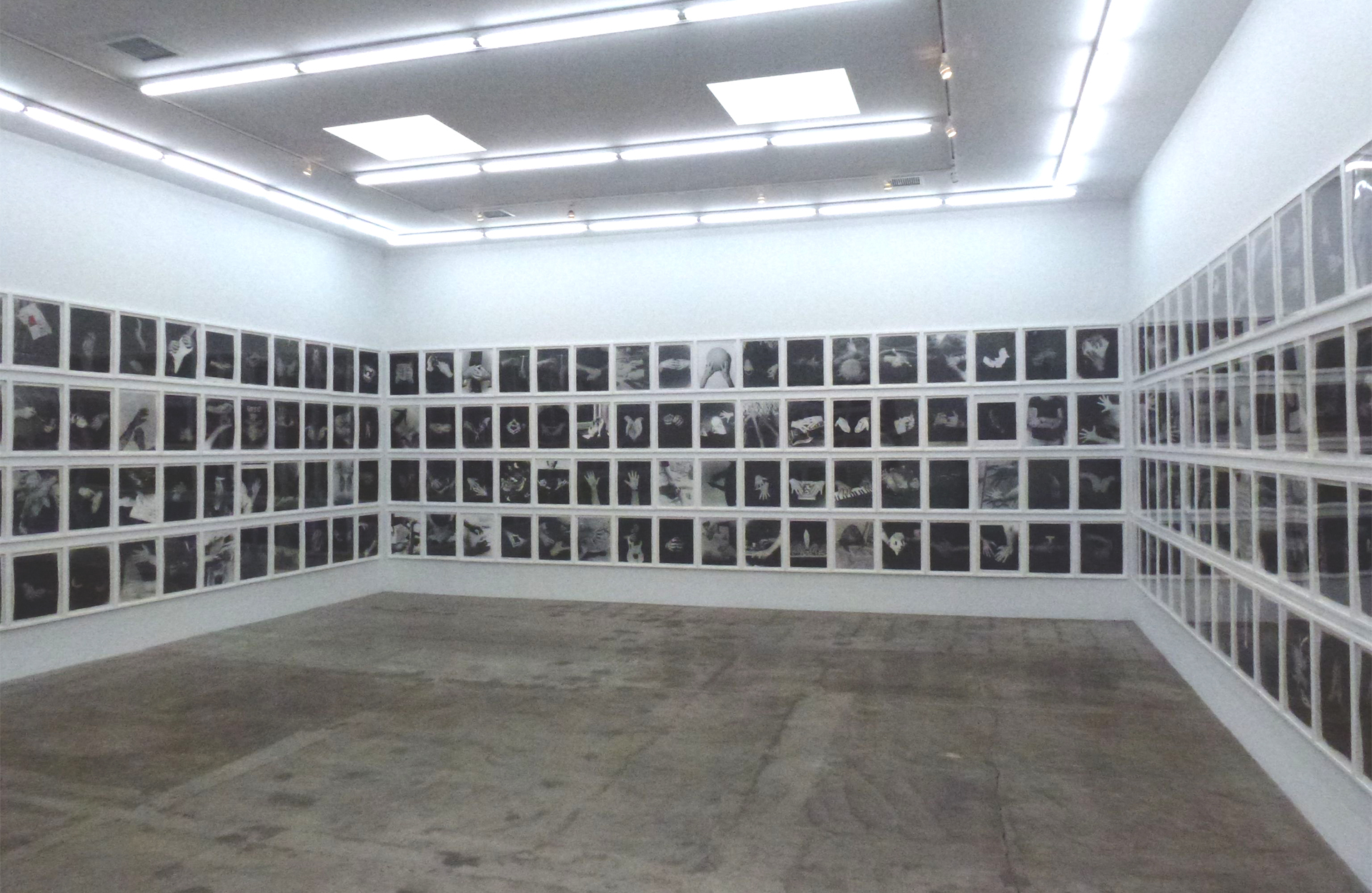Make a donation to the museum

Narrative by Rena Small
Artists’ Hands Grid Continuum began in 1984 in Los Angeles and New York City and has evolved to become a living work of art history; expanding in content and scale over time. The art piece is finished when I die. My art ritual to portrait those I feel akin, is in part, a tribute to friends and colleagues in the arts and a truthful alternative to the bombardment of altered touched up images in mass media or quick standard portraits where someone is suppose to say “cheese”: Unencumbered by the self-consciousness a sitter might experience staring into the camera lens, Artists’ Hands Grid Continuum reveals a vast reservoir of personal expression as hands move unconsciously while we talk shop: Woven together side by side in a modular random pattern guided by intuitive relationships between compositional rhythms or personal memory. Accompanying the installation are handmade volumes, which hold the first 10 x 8 gift sketch prints that each artist received in exchange for their collaboration and option to share any text with their image to tell the audience, about their hands or when they first knew they were an artist. By Conceptual and Language Art design, the text does not illustrate the portrait. The expansive installation along with handmade books to hold provides viewers with both an epic and intimate experience of collective portraiture. The project has become an ode to the often neglected and sometimes debated truth of the importance of our hands to the creation of the work. Accepted practices of the artist’s ‘concept’ being as, if not more, important than the work involved in its creation has overtaken the essential value and necessity brought about by every artist’s physical involvement in making their work. Some of the tools available to artists today have put a notable distance between the creator and the creation. That space has grown cold and often dulls my sensory experience of the art. A unique freedom from the burden of identity can be felt in the absence of the weight of politics and religion, gender and race, age, status, art genre and geography. Without the immediate knowledge, or uncanny assumptions, afforded the viewer when confronted with faces, the conversation may be directed at the role I play as the artist-maker of the object; empowering my artwork to be connective, passionate, immediate and visceral.